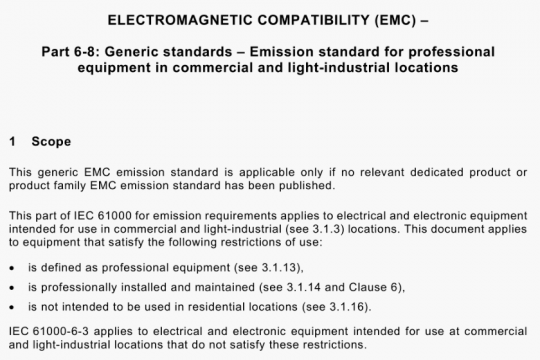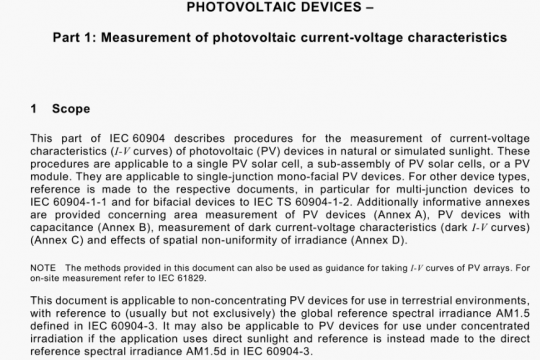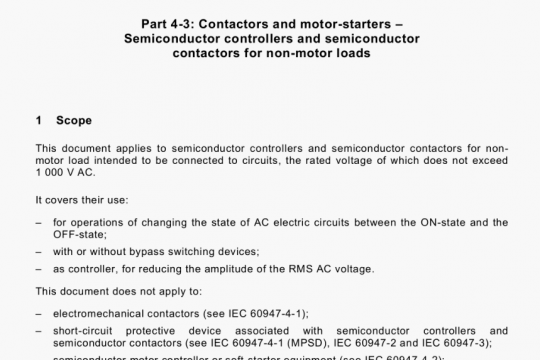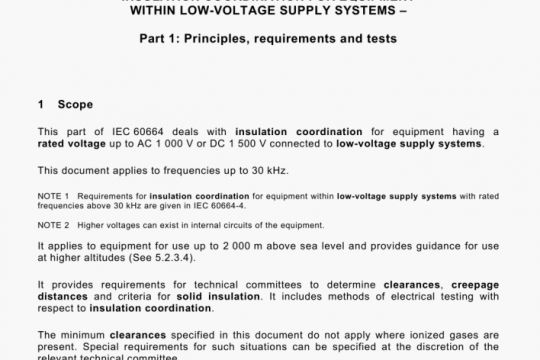IEC 60076-7-2018 pdf free
IEC 60076-7-2018 pdf free.Power transformers – Part 7: Loading guide for mineral-oil-immersed power transformers.
The normal life expectancy is a conventional reference basis for continuous duty under design ambient temperature and rated operating conditions. The application of a load in excess of nameplate rating and/or an ambient temperature higher than design ambient temperature involves a degree of risk and accelerated ageing. It is the purpose of this part of IEC 60076 to identify such risks and to indicate how, within limitations, transformers may be loaded in excess of the nameplate rating. These risks can be reduced by the purchaser clearly specifying the maximum loading conditions and the supplier taking these into account in the transformer design.
5.2 General consequences
The consequences of loading a transformer beyond its nameplate rating are as follows.
a) The temperatures of windings, cleats, leads, insulation and oil will increase and can reach unacceptable levels.
b) The leakage flux density outside the core increases, causing additional eddy-current heating in metallic parts linked by the leakage flux.
c) As the temperature changes, the moisture and gas content in the insulation and in the oil will change.
d) Bushings, tap-changers, cable-end connections and current transformers will also be exposed to higher stresses which encroach upon their design and application margins.
The combination of the main flux and increased leakage flux imposes restrictions on possible core overexcitation [6], [7], [8].
5.3 Effects and hazards of short-time emergency loading
Short-time increased loading will result in a service condition having an increased risk of failure. Short-time emergency overloading causes the conductor hot-spot to reach a level likely to result in a temporary reduction in the dielectric strength. However, acceptance of this condition for a short time may be preferable to loss of supply. This type of loading is expected to occur rarely, and it should be rapidly reduced or the transformer disconnected within a short time in order to avoid its failure. The permissible duration of this load is shorter than the thermal time constant of the whole transformer and depends on the operating temperature before the increase in loading; typically, it would be less than half-an-hour.
The main risk for short-time failures is the reduction in dielectric strength due to the possible presence of gas bubbles in a region of high electrical stress, that is the windirigs and leads. These bubbles are likely to occur when the hot-spot temperature exceeds 140 °C for a transformer with a winding insulation moisture content of about 2 %. This critical temperature will decrease as the moisture concentration increases.
NOTE Concerning the bubble generation, see also IEC 60076-14.
a) Gas bubbles can also develop (either in oil or in solid insulation) at the surfaces of heavy metallic parts heated by the leakage flux or be produced by super-saturation of the oil. However, such bubbles usually develop in regions of low electric stress and have to circulate in regions where the stress is higher before any significant reduction in the dielectric strength occurs.
Bare metallic parts, except windings, which are not in direct thermal contact with cellulosic insulation but are in contact with non-cellulosic insulation (for example, aramid paper, glass fibre) and the oil in the transformer, may rapidly rise to high temperatures. A temperature of 180 °C should not be exceeded.
b) Temporary deterioration of the mechanical properties at higher temperatures could reduce the short-circuit strength.
c) Pressure build-up in the bushings may result in a failure due to oil leakage. Gassing in condenser type bushings may also occur if the temperature of the insulation exceeds about 140 °C.
d) The expansion of the oil could cause overflow of the oil in the conservator.
e) Breaking of excessively high currents in the tap-changer could be hazardous.
The limitations on the maximum hot-spot temperatures in windings, core and structural parts are based on considerations of short-term risks (see Clause 7).
The short-term risks normally disappear after the load is reduced to normal level, but they need to be clearly identified and accepted by all parties involved, e.g. planners, asset owners and operators.IEC 60076-7 pdf free download.




